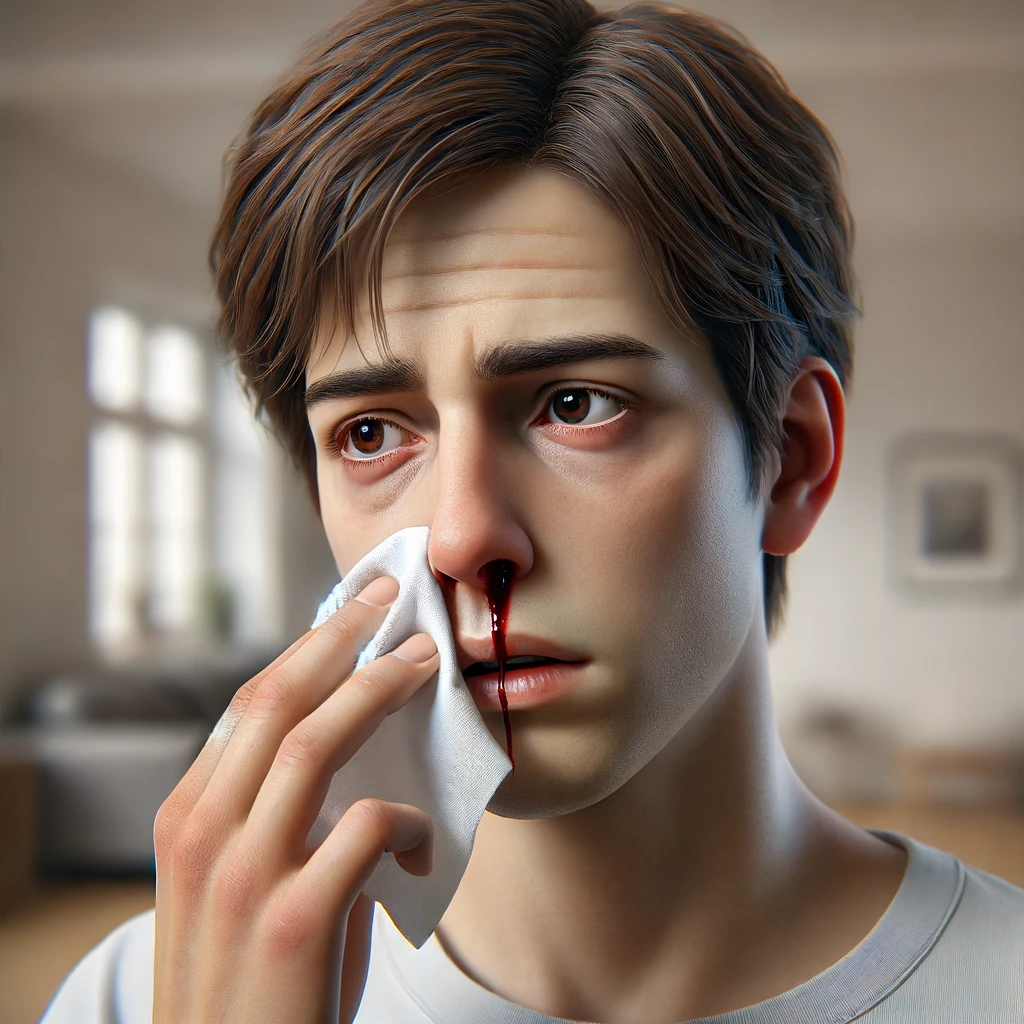Nosebleeds can be alarming, but they are often not serious and can be stopped with simple first aid steps. Here’s how to proceed:
1. Calm the Person
First and foremost, it is important to stay calm and help the person who is bleeding to calm down. Panic can increase blood pressure and worsen the bleeding.
2. Position the Person Correctly
- Sit the person upright: This will reduce the pressure in the blood vessels of the nose.
- Tilt the head slightly forward: This prevents swallowing blood, which can cause nausea and vomiting.
3. Apply Pressure
- Pinch the soft part of the nose: Use your thumb and index finger to pinch the soft part of the nose (below the bony part). Maintain pressure for at least 10-15 minutes. This allows the blood vessels to clot and stop the bleeding.
- Breathe through the mouth: While applying pressure, the person should breathe through their mouth.
4. Apply a Cold Compress
- Use a cold compress: Place a cold compress or ice wrapped in a cloth on the nose and cheeks. The cold will constrict the blood vessels and help stop the bleeding.
5. After the Bleeding Stops
- Avoid sneezing or blowing the nose: After the bleeding stops, the person should avoid sneezing, blowing their nose, or any straining that could cause the bleeding to start again.
- A few hours later: If necessary, the person can use a saline solution to moisten the inside of the nose.
When to Seek Medical Help?
Although most nosebleeds are not serious, in some cases, it is necessary to seek medical help:
- If the bleeding lasts longer than 20 minutes despite applied measures.
- If the bleeding is heavy or occurs frequently.
- If it occurs after a head injury.
- If the person is taking medications that affect blood clotting (anticoagulants).
- If the person has high blood pressure or other medical problems that may affect blood clotting.
Proper application of first aid for nosebleeds can significantly reduce discomfort and complications. It is always important to know when to seek additional medical help to ensure the person’s safety and health.



0 Comments